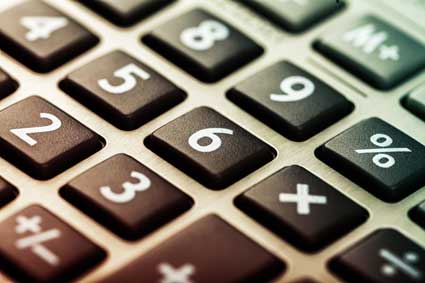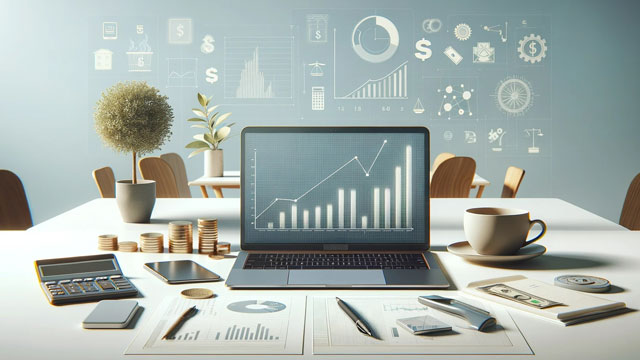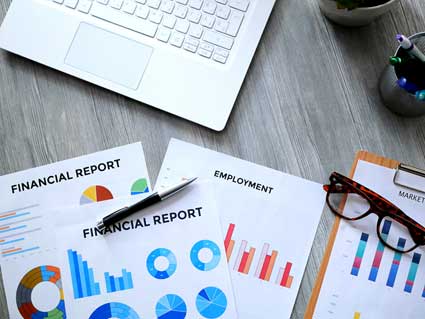Understanding Basic Marketing and Economic Information
Investing is a life-long educational journey - but an enjoyable and enriching one. People can devote their lives to learning about investments.
Investing or "being in the stock market" does not guarantee that you will make money. In fact, if you remember the famous "tech boom" that took place in 2000 and 2001, you may recall that many investors lost a lot of money because of that market which grew incredibly and then collapsed.
When the economy is good everyone makes money. During the tech boom of 2000 and 2001, the market was flooded with "newbie" investors who dumped all of their money into stocks without any real research or knowledge (based mostly on tips they heard from their brother's neighbor's friend's cousin!). Because of the number of people in the stock market, prices naturally rose and it seemed like EVERYBODY made money without even trying. However, when stock prices got a little shaky, many of those inexperienced investors then pulled out and without realizing it became the cause of their own downfall!
What they needed was a basic instructional guide --which is what you'll have through taking this course. While you may not make a fortune by investing with what you learn from this guide (although you might!), you will learn how to make smart investment choices that are based on a solid foundation of knowledge (not rumor) and you will be able to weather the storms that will come. Once you've learned the important investing details, you can then build on this knowledge with specialized courses to become even more successful.
A Short Introduction to the Economy:
Although you and I might dub an economy either good or bad, in general, economists have found that the economy moves in 4 phases. We'll look at the 4 phases: growth, peak, contraction and trough, but understand that the description here is a generalized description and so many other factors are involved.
The "growth phase" is a phase where buyers are clamoring for goods, which requires those goods to be made, which requires manufacturers to build more (and hire more people to build those goods). Those newly hired people now have more money to buy more goods--feeding the cycle. It is a very good phase - everyone's favorite part of the economic cycle - and the reason why everyone was making money during the tech boom. Newspaper headlines most often read "Help Wanted."
At some point, though, inventories catch up to demand and people are buying goods as fast as they can be produced. Money is good. Everyone is happy. This is called the "peak phase". Newspaper headlines most often read "It Will Never End!!!"
Then, because inventories have caught up to demand, prices drop a little (because the product is no longer hard to get). Manufacturers don't need to employ people to work double overtime to catch up with orders, so hours are cut back. Since hours are cut back, people have less to spend. Anticipating a shortage of money, they save more than they normally do by curbing their spending. This is the "contraction phase". When other factors are present it is sometimes called a recession and has even been the start of the Great Depression in 1929. But in general, all economies go through contractions normally. Times are tight but they should not be confused with recessions or depressions. Newspaper headlines most often read "Unemployment Grows."
The fourth phase is the "trough phase". Demand for goods is at its lowest so manufacturers are closing their doors and laying people off. So no one has money to spend on extra items. Instead they save their money for things they desperately need. Newspaper headlines most often read "Will It Ever End???"
Even though things may be tight financially during a contraction and trough, it doesn't last. Slowly, things pick up and the process is started again.
Economists expect the economy to go through all four stages. This is normal and healthy. At first we might wonder why we would want to go through a contraction and a trough. They are not always pleasant (although they're not that bad as long as they don't get to the recession stage). But we do need them. Why? Because of inflation.
Ultimately, we need a contraction to help the economy rest a little. Just like our bodies can't operate at full capacity 24 hours a day. To help avoid financial ruin for many people, government bodies like the Federal Reserve in the USA (and similar organizations in most other countries) make adjustments to the amount of money in the economy and to the interest rates in order to help manage these 4 stages. Peaks that don't get too high and troughs that don't get too low. You may have heard of the term "soft landing" which is what economic decision makers try to do when they know a contraction is expected. Like an airplane, they make decisions to help bring the economy in for a soft landing so that it can be ready to take off again shortly.
But here's something that most people don't know: an economy is only as healthy as the amount of money that is flowing. During the growth and peak phase, there is a lot of money flowing: just about everyone has a job and they're spending like crazy. During the contraction phase, people are concerned about their job security and they begin saving money in case they get laid off or because they think their wages might be cut. Because so many people do this, money is taken out of the economy and stored away (in a savings account or under a mattress). Although it sounds counter-intuitive, one way to improve a falling economy is to spend more money. In order to get it out from under the mattress and into the economy!
That is a very similar reason why the tech bubble burst in 2000 and 2001. Many inexperienced investors didn't understand that the money they were investing was helping the economy and the companies they were investing in. When stock prices got a little shaky (as they do from time to time), investors pulled out of the stocks quickly, afraid they would lose their money. When so many people pulled out at once, stock prices collapsed, scaring off even more investors, who pulled out and pushed stock prices lower. And people lost money. It was a self-fulfilling prophecy and could have been avoided if people had stayed the course. Instead, the companies and the economy were relying on that money to keep functioning and when it disappeared suddenly, everything dropped. The better solution would have been for investors to hold on. Their resilience would have kept the market from dropping. People who lost money on the stock market lost it because of their own actions.
|
True stories |
"During the tech bubble, I saw one woman come into my office, put a blank check down on the table and ask to sign up for an account. I signed her up and then asked what she was thinking about investing in. She said she didn't know but then randomly put her finger on one of the stocks on a large list on my computer screen and said, 'how about that one.' Those were crazy times; I never saw anything like it before and I haven't since." - Former investment adviser |
What you've learned about the economy will provide a basic foundation to investment success and will help you understand other aspects of the stock market. Let's now turn our attention to the stock market itself.
What is the Stock Market?
Imagine this analogy:
|
XYZ Widgets is a growing company owned by Mr. Jones. He wants to grow his business so he is willing to share some of the financial rewards and risks in order to raise some capital to build his business. So he divides up the business into 100 even pieces on paper. Each "share" in the company is represented by a certificate. Since he wants to keep control of the company himself, he keeps 51 certificates and then brings the other 49 certificates to the auction. While he's driving there, he wonders to himself how much he should charge for these certificates. He needs $5000 to build his business so he determines that if he sells each of the 49 shares for $100 each, he'll get $4900. very close to what he needs. He arrives at the auction and gives his certificates over to the auctioneer and asks the auctioneer to start bidding at $100. In the audience, no one has heard of XYZ Widgets before so no one wants to pay $100. The bidding is fairly quiet to start so the auctioneer drops the price to $90, then $80, then $75. Finally, someone buys one of the certificates at $75. Then the auctioneer presents the next certificate and starts the bidding at $75 and someone buys it right away. Then he does the same for the third certificate and someone else buys it for $75. Now people are starting to notice that the certificates seem quite popular and they bid on them, too. The prices rise to $80 for the next 5. Then the price rises to $90 for the next 5. Then people start bidding like crazy, noticing just how popular these investments are and most of the stocks end up selling for between $100 and $120. After his last certificate is sold, Mr. Jones collects his money and heads back to his office, happy that he earned well above what he hoped to make. Even though he was worried at the beginning, the majority of his certificates sold for more than he hoped and he ended with well over his target of $5000. But the day is not over at the auction. Remember the first person who bought the stock for $75? He sees that everyone else was buying them for $100 to $120 so he put his back onto the auction block and it sold right away for $125, earning him $50. A few other people do that and the stock continues to rise to $130, then $140, then $150 per certificate. The second person who had bought a certificate at $75 earlier in the day sold their share for $150 and profited $75. But things start to quiet down. People are getting tired and going home and those who wanted shares of XYZ now have them. Others are counting their money and realizing that they don't want to buy a stock for $150. A few other people have heard of XYZ Widget and think that it might do well. But it might not. Now, the people who have bought the shares at $150 decide they want to sell them. They put them on the auction block but no one buys. So they drop the price to $140. Still no one buys. Then they put them on the auction block for $130 and finally someone buys the stock. The person who had bought the shares for $150 just lost $20 by reselling them for just $130. Across the room, someone who had just bought shares at $140 noticed that the price dropped to $130. Realizing that they don't want to lose $20 (like the person just before them) they rush up to the auctioneer and put their share up for sale. It sells for $125. Seeing that person run to the auctioneer, another person gets worried and puts their stock up for sale, hoping to minimize their losses. Finally, the frenzy settles around $105. The selling slows as people notice that other people are buying them up because $105 seems like a good price. The certificates become popular again and the price starts to climb. |
That is a simple description of how the stock market works but it is fairly accurate. A company brings its stock to the market and then buyers and sellers (investors) drive the price up and down based on what they are willing to buy or sell the stock for. After the company has its money from its initial offering of the shares, investors make or lose money from the difference in price between what they bought the shares at and what they sell them at.
Imagine for a moment what would happen if news came out that XYZ Widgets had just hired a super-salesperson who had a track record of selling the most widgets to anyone, anywhere. Wouldn't everyone want to own a piece of that company? Share prices would likely go higher.
But what would happen if news came out that XYZ Widgets were faulty in some way. Perhaps they shipped several orders out that were broken and the company had to send out new widgets to the customers who had received broken ones. Would you wonder what was going on at XYZ Widgets? So would several others and many people would sell their shares because they were concerned the company could be financially ruined.
And what, exactly, are they buying? They are buying a share in the company. They are buying a vote at the annual meeting. They are buying the fortunes or misfortunes of the company: if it collapses, they lose their investment. If it does really well, its stock will be popular and the price will go up and they can sell it to make money. In some cases (but not all) they also enjoy a dividend - extra profits paid out to shareholders.
Stock Markets Around the World
There are many stock exchanges in the world. There are over 80 exchanges in over 60 countries, but this number constantly changes as stock markets buy each other out or fold into other stock markets.
Different stock markets specialize in different things. The famous New York Stock Exchange specializes in equities -- which are shares in companies like the kind mentioned in the example above. The New York Mercantile Exchange is a different exchange that deals in commodities which are the prices of physical products like crops, livestock, etc. The NASDAQ is known for its slightly riskier stocks (quite often in the software or biotech industries).
Exchanges are formalized and regulated organizations where the stocks are traded. In the past, you've probably seen pictures of people in colored jackets making strange hand signals and yelling loudly while lines of letters and numbers stream by on boards nearby. That was the Stock Exchange, although they are now becoming more and more computerized. Although it is done by computer now, this is the place where the shares are passed from one investor to another through licensed and regulated agents.
Famous Stock Exchanges include:
- London Stock Exchange
- New York Stock Exchange
- Toronto Stock Exchange
- NASDAQ (which means "National Association of Securities Dealers Automated Quotations")
- Frankfurt Stock Exchange (called the "Deutsche Bourse")
- Tokyo Stock Exchange
- Hong Kong Stock Exchange
You and I can't go to a stock exchange to trade our shares. Instead we have to go to a broker who does it for us.
Indexes are barometers of the stock market and the economy. An index is usually a basket of stocks meant to give people a rough idea about how the market is doing. In North America, you have probably heard of the famous Dow Jones Industrial Average, the most famous of several indexes created by the Dow Jones company. Each of these averages or indexes are meant to show one sector of the economy and how it is doing, although the industrial average - which is made up of 30 stocks - is the most common. When the financial news says "The Dow Was Up Today" that means the average value of the 30 stocks was higher than it was before. And when the financial reporter says "The Dow Was Down Today" it means just the opposite. (Note: average value is a weighted average, not the actual average).
Another index - one that critics say is better - is the famous S&P 500 (often on the financial news, that's how it is referred to -- the short-form of its full name, which is "Standard and Poor's 500 Index.") One of the several reasons it is considered to be a more accurate barometer of the stock market is because it is made up of 500 companies spread over a range of industries rather than only 30 in a limited industry.
Both are popular indexes today.
It's important to know the difference between exchanges and indexes. Those terms can be confusing to people who have little or no experience with the stock market. Ultimately, an index is a barometer that gives us a snapshot into how the stock market is doing. An exchange is where the stocks are physically or electronically traded.
Who are the players involved?
There are many people involved in the stock market. You want to make money on the stock market so the only person you need to really know about is the broker who does the trading. Although there are other parties and organizations and companies involved, ultimately, it's the broker who you interact with.
The broker you deal with has varying levels of involvement in your finances. A full service broker has to undergo rigorous testing and licensing and for every client they have, there are strict rules called "Know Your Client" (KYC) rules. If you are a low risk investor and approach your full service broker about a high risk investment, they are required by the KYC rules to talk to you about it and probably recommend against it. Full service brokers are allowed to (and supposed to) give you good advice. They are checked up on a regular basis by compliance officers to make sure they do this.
The other kind of broker is a discount broker. In some cases, you might not even meet these brokers face to face, especially if you do your investing over the internet. They have some KYC rules and are not allowed to give you any advice. If you are a low risk investor and make a high risk investment, they may contact you about it -- but they may not. The rules are different for discount brokers (especially online discount brokers) because you are giving up their advice in order to spend less on your trades.
Disclaimer
- Every investor is different and not every investment is the right investment for everyone. Different investments are appropriate for different people, depending on many factors. Nothing here should be considered a specific recommendation to your situation, but rather just given to provide general information. You should talk to a professional to determine your own investment situation.
- There are so many different kinds of investments all over the world. They change all the time and they go by different names. For example, a short term guaranteed deposit is called a Guaranteed Investment Certificate (GIC) in Canada and a Certificate of Deposit (CD) in the US. In general, we will refer to the most common name - the American name - for these investments but you should familiarize yourself with the names of these types of investments in your country. Also understand that there may be subtle differences you should make yourself aware of. Even the term investment representative and investment adviser mean different things in different countries.


































